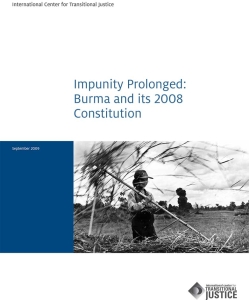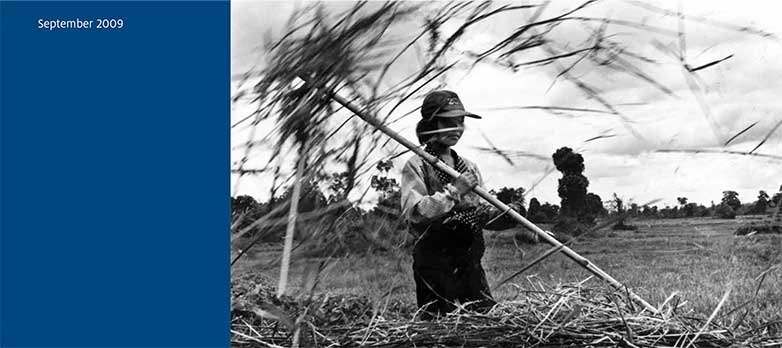Impunity Prolonged: Burma and its 2008 Constitution
Executive Summary
Burma (also known as Myanmar) has been under military rule since 1962 when General Ne Win took power from the democratically elected government. Following nationwide protests in 1988, another coup
marked the commencement of the current regime (initially called the State Law and Order Restoration Council, or SLORC, and now called the State Peace and Development Council, or SPDC). The new
regime promised to usher in democracy and elections were held in 1990. However the military rulers refused to allow the winning National League for Democracy (NLD) to form a new government. Instead,
they convened a National Convention to draft a new constitution, handpicking most of the initial 702 delegates and inviting only 106 of the elected Members of Parliament to participate. After many delays,
the convention completed the draft on September 3, 2007.
The convention ended just after a sudden rise in fuel costs caused the prices of commodities to increase considerably, prompting Buddhist monks to lead mass demonstrations calling for economic reform and
national reconciliation. The military responded with ferocious force, raiding monasteries and firing on crowds of peaceful protestors. Many of the protesters were detained and reportedly tortured, and some
were sentenced to long prison terms.
In response to international criticism over the crackdown, the SPDC announced that a national referendum on a new constitution would take place on May 10, 2008, and elections would follow two years later. One week before the referendum, Cyclone Nargis hit Burma, and more than 130,000 people either died or were missing. Still, the military rulers insisted on proceeding with the referendum; they later
claimed that, despite the death and mass destruction, more than 92 percent of eligible voters had approved the new constitution.
An analysis of the constitution’s provisions suggests that instead of being a true catalyst for lasting change, it further entrenches the military within the government and the associated culture of impunity. In addition to providing amnesty to the ruling regime for any crimes committed, the constitution creates a governing structure that gives the military the ability to dominate the government and protect its interests in perpetuity. It reserves 25 percent of the seats in both houses of parliament for members of the security forces who undoubtedly will obey the instructions of their commanding officers. A substantial number of the remaining 75 percent of MPs will probably be ex-military and civil service officials who support the SPDC. To reinforce the structural guarantee that the regime retains its control, the constitution further requires that a number of the most important ministries be led by military personnel. As a result, military interests will dominate the government and parliament.


